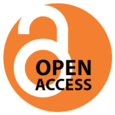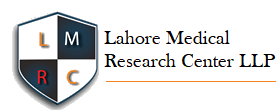Assessment of Deranged Lipid Profiles and Correlated Dependent Factors in Patients with Ischemic Stroke at a Tertiary Care Setup in Islamabad
Assessment of Deranged Lipid Profiles and Dependent Factors in Patients
DOI:
https://doi.org/10.54393/pjhs.v6i1.1975Keywords:
Cerebrovascular, Dyslipidemia, Ischemic stroke, Lipid Profiles, AssessmentAbstract
The deranged lipid profile of patients is greatly associated with multiple complications hence leading towards the co morbidities and eventually been a reason of high mortalities. Objectives: To determine the cases of deranged lipid profiles among patients with confirmed diagnosis of ischemic stroke, dependent variables & co morbidities. Methods: A Descriptive, cross-sectional study was conducted at the Department of Medicine Fauji Foundation Hospital Rawalpindi from 20th March 2023 to 19th September 2023 a sample size of 110 was calculated using a WHO sample size calculator with a confirmed diagnosis of ischemic stroke from the age range of 30 years to 80 years of age were recruited in the study. A total of 5ml of the venous sample was obtained after 8 hours of fasting, and centrifuged at 40 Celsius for 15 minutes to analyze the serum lipid profile for obtaining true levels of high-density lipoproteins HDL, and low-density lipoprotein LDL using the auto analyzer machine. The collected data were assessed by data stratification using SPSS and post-stratification Chi-square test was applied and the P value of <0.05 was considered significant. Results: The total cholesterol was deranged in 57.27%, LDL cholesterol was deranged in 60.0%, deranged triglyceride levels in 67.27% and deranged HDL cholesterol in 32.73% of patients. Conclusions: The current study concluded that the frequency of dyslipidemia is significantly high among patients with ischemic stroke. The functions of HDL are dependent on certain factors such as genetics, lifestyle changes, and environmental factors
References
Seetlani NK, Kumari G, Yasmin F, Hasan CA, Hussaini M, Awan S et al. Frequency and Pattern of Deranged Lipid Profile in Patients with Ischemic Stroke: A Retrospective Study. Acta Bio Medica: Atenei Parmensis. 2022 Jul; 93(3): 2-11.
Shabana, Shahid SU, Sarwar S. The Abnormal Lipid Profile in Obesity and Coronary Heart Disease (CHD) in Pakistani Subjects. Lipids in Health and Disease. 2020 Dec; 19: 1-7. doi: 10.1186/s12944-020-01248-0. DOI: https://doi.org/10.1186/s12944-020-01248-0
Shamim A, Hassan A, Iqbal A, Aleem F, Hammad H, Aqeel M. Frequency of Normal Low Density Lipoprotein Level in Stroke Patients. MedERA-Journal of CMH LMC and IOD. 2021 Oct; 3(1): 13-17.
Ali I, Abuissa M, Alawneh A, Subeh O, Abu Sneineh A, Mousa S et al. The Prevalence of Dyslipidemia and Hyperglycemia Among Stroke Patients: Preliminary Findings. Stroke Research and Treatment. 2019 Oct; 2019(1): 2-6. doi: 10.1155/2019/8194960. DOI: https://doi.org/10.1155/2019/8194960
Liu X, Yan L, Xue F. The Associations of Lipids and Lipid Ratios with Stroke: A Prospective Cohort Study. The Journal of Clinical Hypertension. 2019 Jan; 21(1): 127-35. doi: 10.1111/jch.13441. DOI: https://doi.org/10.1111/jch.13441
Gong X, Chen L, Song B, Han X, Xu W, Wu B, Sheng F, Lou M. Associations of lipid profiles with the risk of ischemic and hemorrhagic stroke: A systematic review and meta-analysis of prospective cohort studies. Frontiers in cardiovascular medicine. 2022 Nov 3;9:893248. Doi.org/10/3389/fcvm.2022.893248 DOI: https://doi.org/10.3389/fcvm.2022.893248
Gu X, Li Y, Chen S, Yang X, Liu F, Li Y et al. Association of Lipids with Ischemic and Hemorrhagic Stroke: A Prospective Cohort Study Among 267 500 Chinese. Stroke. 2019 Dec; 50(12): 3376-84. doi: 10.1161/STROKEAHA.119.026402. DOI: https://doi.org/10.1161/STROKEAHA.119.026402
Saproo N and Singh R. Ischemic and Hemorrhagic Stroke: A Comparative Evaluation of Lipid Profile. International Journal of Clinical Trials. 2021 May; 8(2): 121-4. doi: 10.18203/2349-3259.ijct20211403. DOI: https://doi.org/10.18203/2349-3259.ijct20211403
Masud M, Bangash LR, Mumtaz SU, Iqtadar S, Komal T, Abaidullah S et al. Patterns of Deranged Lipid Profiles in Patients of Chronic Hepatitis C: Deranged lipid profile in hepatitis C patients. Pakistan BioMedical Journal. 2019 Dec; 2(2): 23-27. doi: 10.52229/pbmj.v2i2.19. DOI: https://doi.org/10.52229/pbmj.v2i2.19
Gulati SK. Evaluation of The Impact of Deranged Lipid and Glucose Profile Among Stroke Patients: An Observational Study. International Journal of Advanced Research in Medicine. 2021 Jun; 3(1): 187-191. doi: 10.22271/27069567.2021.v3.i1d.134. DOI: https://doi.org/10.22271/27069567.2021.v3.i1d.134
Zhang A, Deng W, Zhang B, Ren M, Tian L, Ge J, Bai J, Hu H, Cui L. Association of lipid profiles with severity and outcome of acute ischemic stroke in patients with and without chronic kidney disease. Neurological Sciences. 2021 Jun;42:2371-8.doi.org/10.1007/s10072-020-04791-x. DOI: https://doi.org/10.1007/s10072-020-04791-x
Jin Z, Hao D, Song Y, Zhuang L, Wang Q, Yu X. Systemic inflammatory response index as an independent risk factor for ischemic stroke in patients with rheumatoid arthritis: a retrospective study based on propensity score matching. Clinical Rheumatology. 2021 Oct;40(10):3919-27.doi.org/10.1007/s10067-021-05762-z DOI: https://doi.org/10.1007/s10067-021-05762-z
Alloubani A, Nimer R, Samara R. Relationship between hyperlipidemia, cardiovascular disease and stroke: a systematic review. Current Cardiology Reviews. 2021 Dec 12;17(6). Doi.org/10.2174/1573403X16999201210200342 DOI: https://doi.org/10.2174/1573403X16999201210200342
Ahmed A, Cule M, Bell JD, Sattar N, Yaghootkar H. Differing genetic variants associated with liver fat and their contrasting relationships with cardiovascular diseases and cancer. Journal of Hepatology. 2024 Dec 1;81(6):921-9.doi.org/10.1016/j.jhep.2024.06.030 DOI: https://doi.org/10.1016/j.jhep.2024.06.030
Merchant AT. The INTERSTROKE Study on Risk Factors for Stroke. The Lancet. 2017 Jan; 389(10064): 35-6. doi: 10.1016/S0140-6736(16)32613-7. DOI: https://doi.org/10.1016/S0140-6736(16)32613-7
Kosmas CE, Rodriguez Polanco S, Bousvarou MD, Papakonstantinou EJ, Peña Genao E, Guzman E, Kostara CE. The triglyceride/high-density lipoprotein cholesterol (TG/HDL-C) ratio as a risk marker for metabolic syndrome and cardiovascular disease. Diagnostics. 2023 Mar 1;13(5):929.doi.org/10.3390/diagnostics13050929 DOI: https://doi.org/10.3390/diagnostics13050929
Naing L, Nordin RB, Abdul Rahman H, Naing YT. Sample Size Calculation for Prevalence Studies Using Scalex and Scalar Calculators. BMC Medical Research Methodology. 2022 Jul; 22(1): 2-8. doi: 10.1186/s12874-022-01694-7. DOI: https://doi.org/10.1186/s12874-022-01694-7
Chen C, Qiao X, Guo J, Yang T, Wang M, Ma Y, Zhao S, Ding L, Liu H, Wang J. Related factors based on non-targeted metabolomics methods in minor ischaemic stroke. Frontiers in Endocrinology. 2022 Sep 14;13:952918.doi.org/10/3389/fendo.2022.952918 DOI: https://doi.org/10.3389/fendo.2022.952918
Li X, Sun B, Wang L, Zhang J, Zhang J, Zhao Z, Wu H, Liu X, Zhou Y, Mossa‐Basha M, Tirschwell DL. Association of type 2 diabetes mellitus and glycemic control with intracranial plaque characteristics in patients with acute ischemic stroke. Journal of Magnetic Resonance Imaging. 2021 Aug;54(2):655-66.doi.org/10.1002/jmri.27614 DOI: https://doi.org/10.1002/jmri.27614
Han Y, Huang Z, Zhou J, Wang Z, Li Q, Hu H et al. Association Between Triglyceride-To-High Density Lipoprotein Cholesterol Ratio and Three-Month Outcome in Patients with Acute Ischemic Stroke: A Second Analysis Based on a Prospective Cohort Study. BMC Neurology. 2022 Jul; 22(1): 2-13. doi.org/10.1186/s12883-022-02791-2. DOI: https://doi.org/10.1186/s12883-022-02791-2
Chen Y, Zhang Y, Jiang L, Lu Y, Ding X, Jin W, Xiong C, Huang D. Investigation of vascular risk factor control and secondary prevention medication compliance in acute ischemic stroke. Frontiers in Neurology. 2024 Jun 21;15:1365860.doi.org/10.3389/fneur.2024.1365860. DOI: https://doi.org/10.3389/fneur.2024.1365860
Ammad B, Malik A, Muhammad RS, Javed M. Frequency of Hyperlipedemia in Patients Coming with Ischemic Stroke in Tertiary Care Hospital Karachi. Pakistan Journal of Neurological Sciences (PJNS). 2023; 18(2): 7-13. doi: 10.56310/pjns.v18i02.265.Pedragosa A, Mauri M, Guerrero C, Borrallo R, Canovas D, De La Osa NP et al. Management of Lipid-Lowering Treatment in Patients with Ischemic Stroke in Catalonia, Spain. Atherosclerosis. 2021 Aug; 331. Doi.org/10.1016/j.atherosclerosis.2021.06.787
Lee SH, Kang MK, editors. Stroke revisited: dyslipidemia in stroke. Springer. 2021 Aug. doi.org/ 10.1007/978-981-16-3923-4 DOI: https://doi.org/10.1007/978-981-16-3923-4
Everest S, Castillo G, Gaitero L. Primary Hyperlipidemia with Associated Ischemic Strokes in a West Highland White Terrier Dog. The Canadian Veterinary Journal. 2020 Oct; 61(10): 1060-1064.
Taimuri BA, Malik A, Muhammad RS, Javed M. Frequency of Hyperlipidemia in Patients with Ischemic Stroke Visiting at a Tertiary Care Hospital in Karachi. Pakistan Journal of Neurological Sciences. 2023 Sep; 18(02): 7-13. doi: 10.56310/pjns.v18i02.265. DOI: https://doi.org/10.56310/pjns.v18i02.265
Downloads
Published
How to Cite
Issue
Section
License
Copyright (c) 2025 Pakistan Journal of Health Sciences

This work is licensed under a Creative Commons Attribution 4.0 International License.
This is an open-access journal and all the published articles / items are distributed under the terms of the Creative Commons Attribution License, which permits unrestricted use, distribution, and reproduction in any medium, provided the original author and source are credited. For comments













